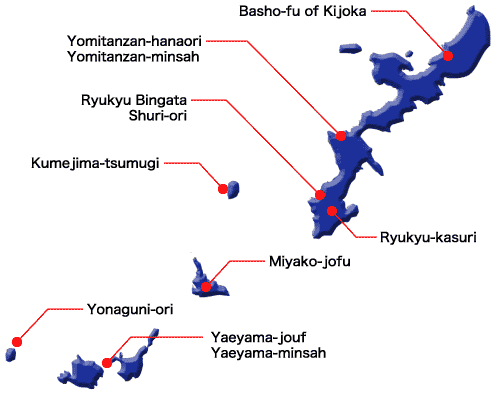| |
In the 15th to 16th centuries, the Ryukyu Kingdom enjoyed an era of prosperity, trading actively with China, Korea and Southeast Asian countries. In 1732, Chuzan-ou Satto first made a tribute to the Ming Dynasty Emperor (China) by the invitation of Emperor Taizu,Hong Wu of Ming and started tribute trade. Through this system, the textiles of Ryukyu, while incorporating the influence of foreign cultures, made a unique development. The richness in raw materials such as Basho (banana plant) and Choma (ramie) that grow naturally on the islands or various plant dyes that the sub-tropical climate provides brought about a huge variety in textiles produced in Okinawa. However, after the great trading era, the textile industry had its peak due to a different reason from foreign influences.
In 1690, a capitation (poll tax) was introduced as a result of an invasion of the Ryukyu by the Satsuma. The women of Miyako, Yaeyama and Kume Islands were ordered to pay their taxes with cloths that they wove instead of rice. On order from the Shuri government they were to weave exactly as the design and color in Mi-ezu-cho (design/pattern book). This cruel poll tax which lasted 250 years and the consequent suffering and efforts of the people was reflected in the advancement of techniques which laid the foundation of today's weaving. The Ryukyu textiles, after the development and survival of these times, suffered devastating damage and lost much of its tradition in World War II. It also declined due to the influence of Western clothing culture. However, owing to post-war efforts to revive the tradition, the textiles are again actively woven in many parts of Okinawa and being passed down to younger generations as traditional craftwork.
|

